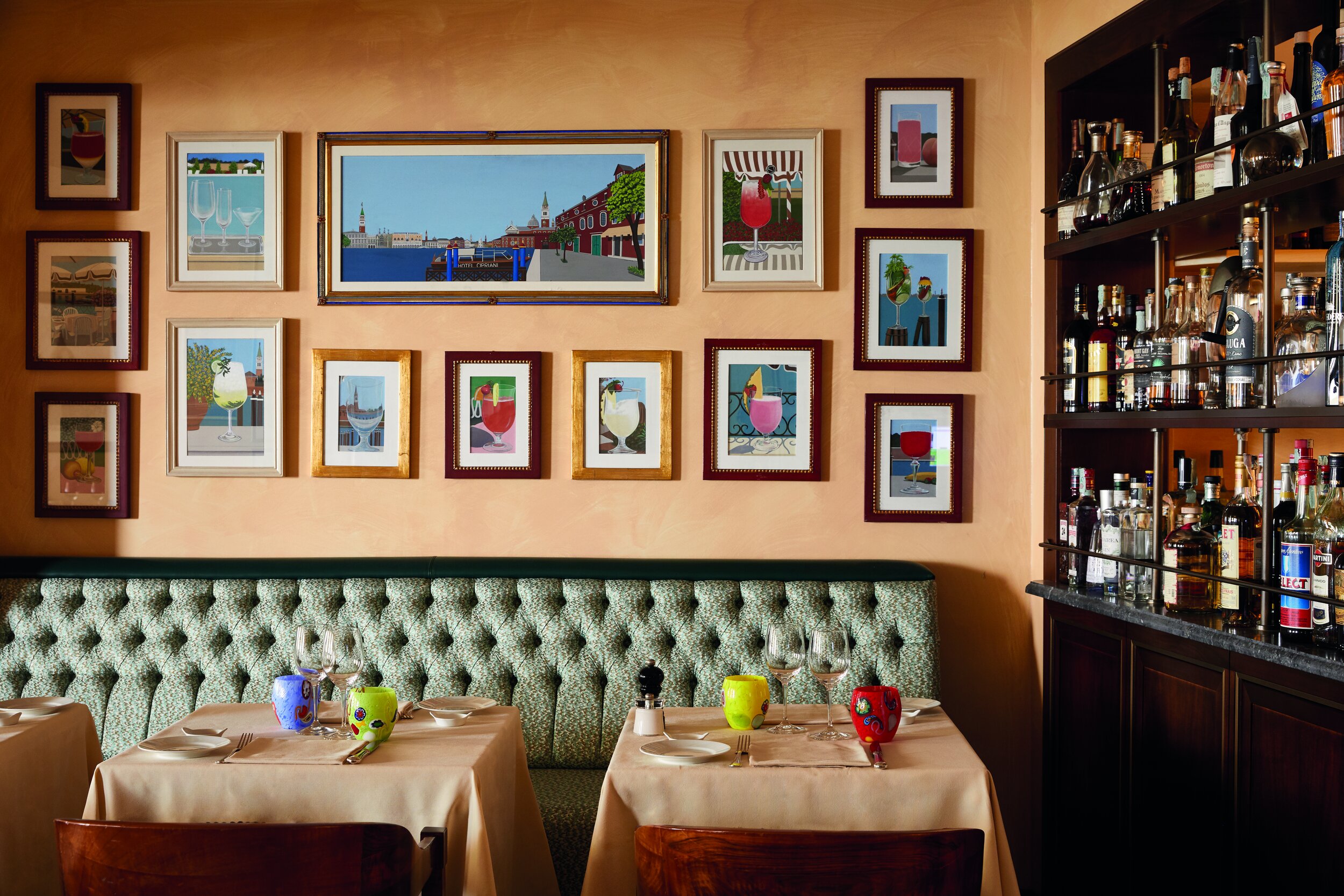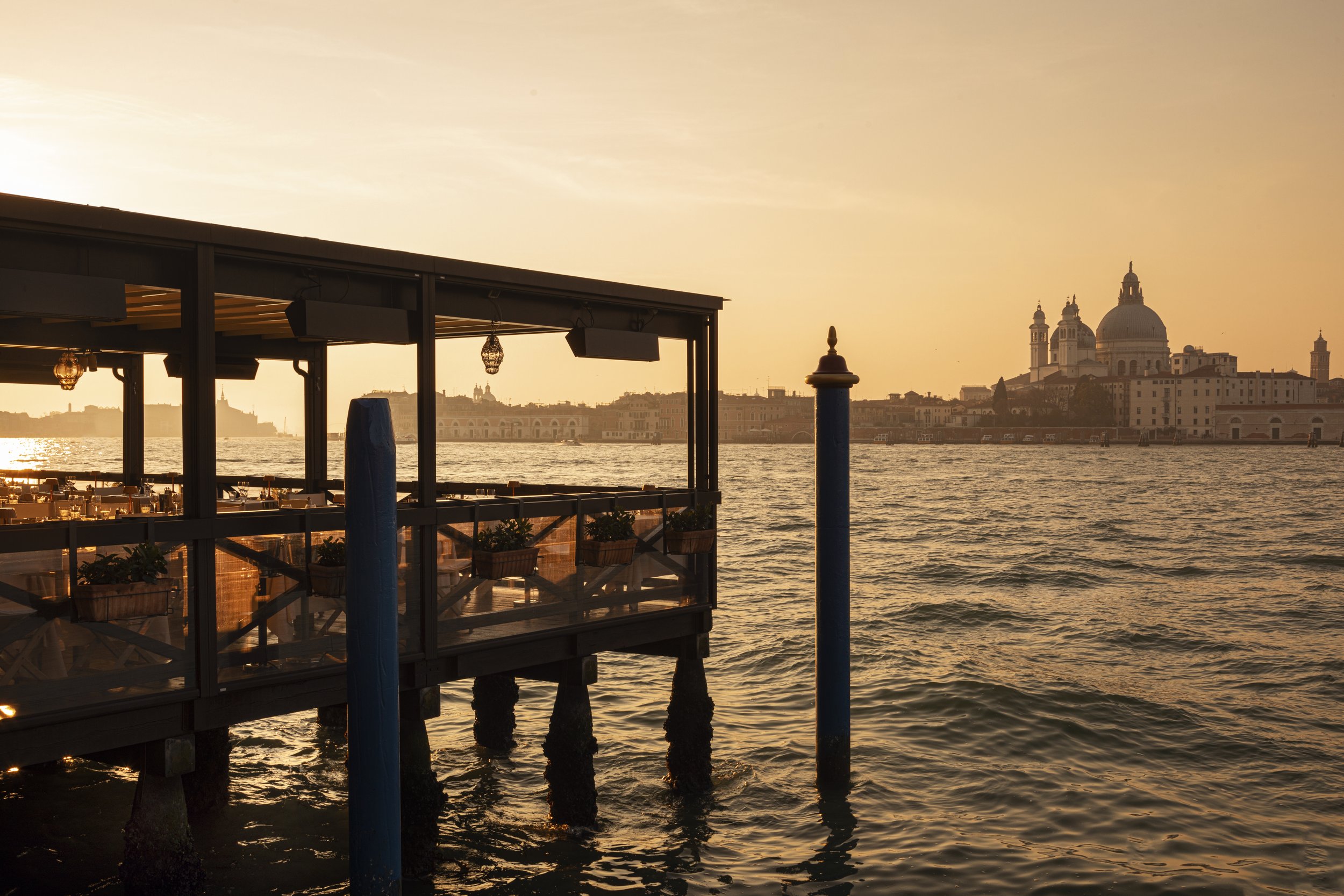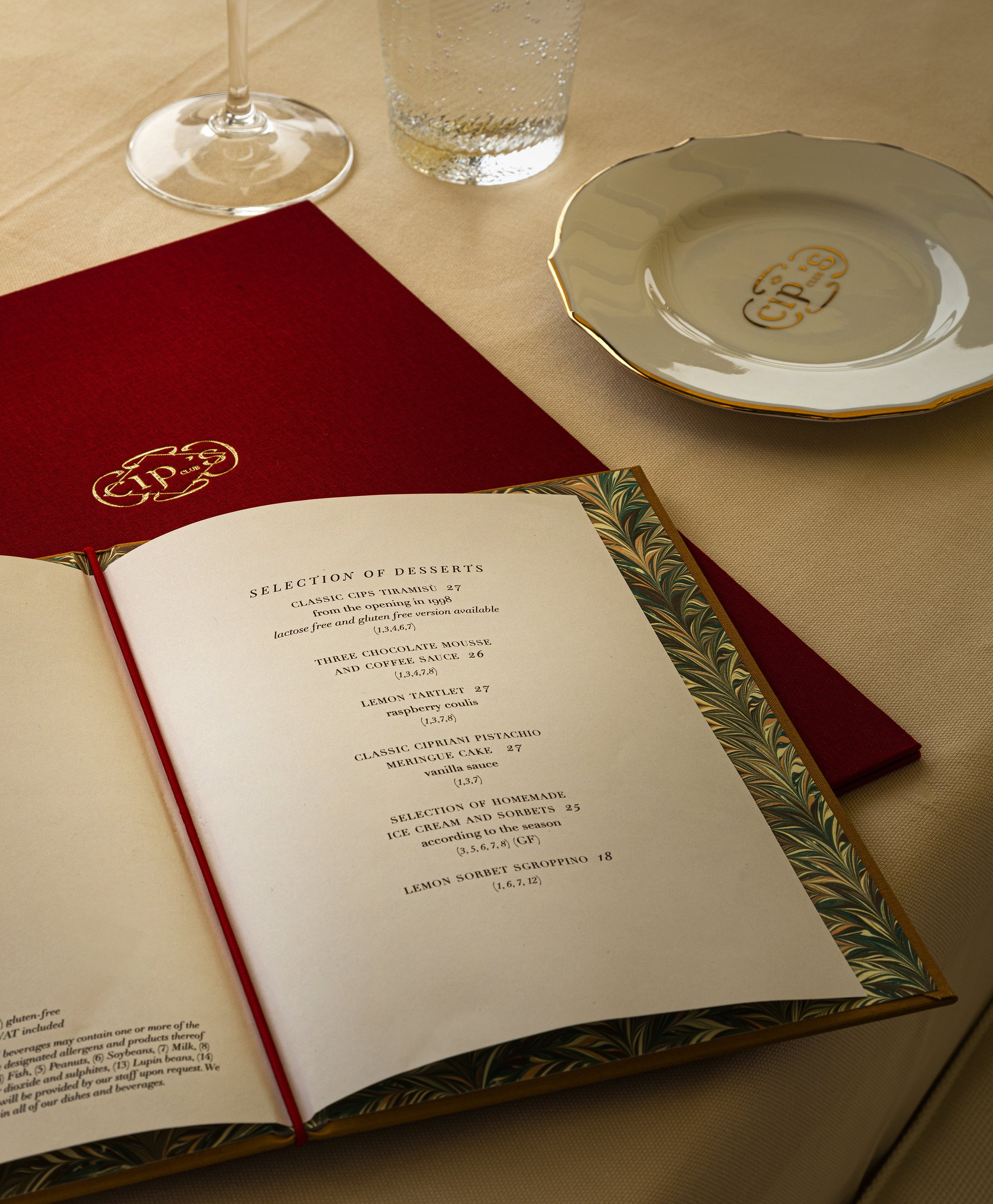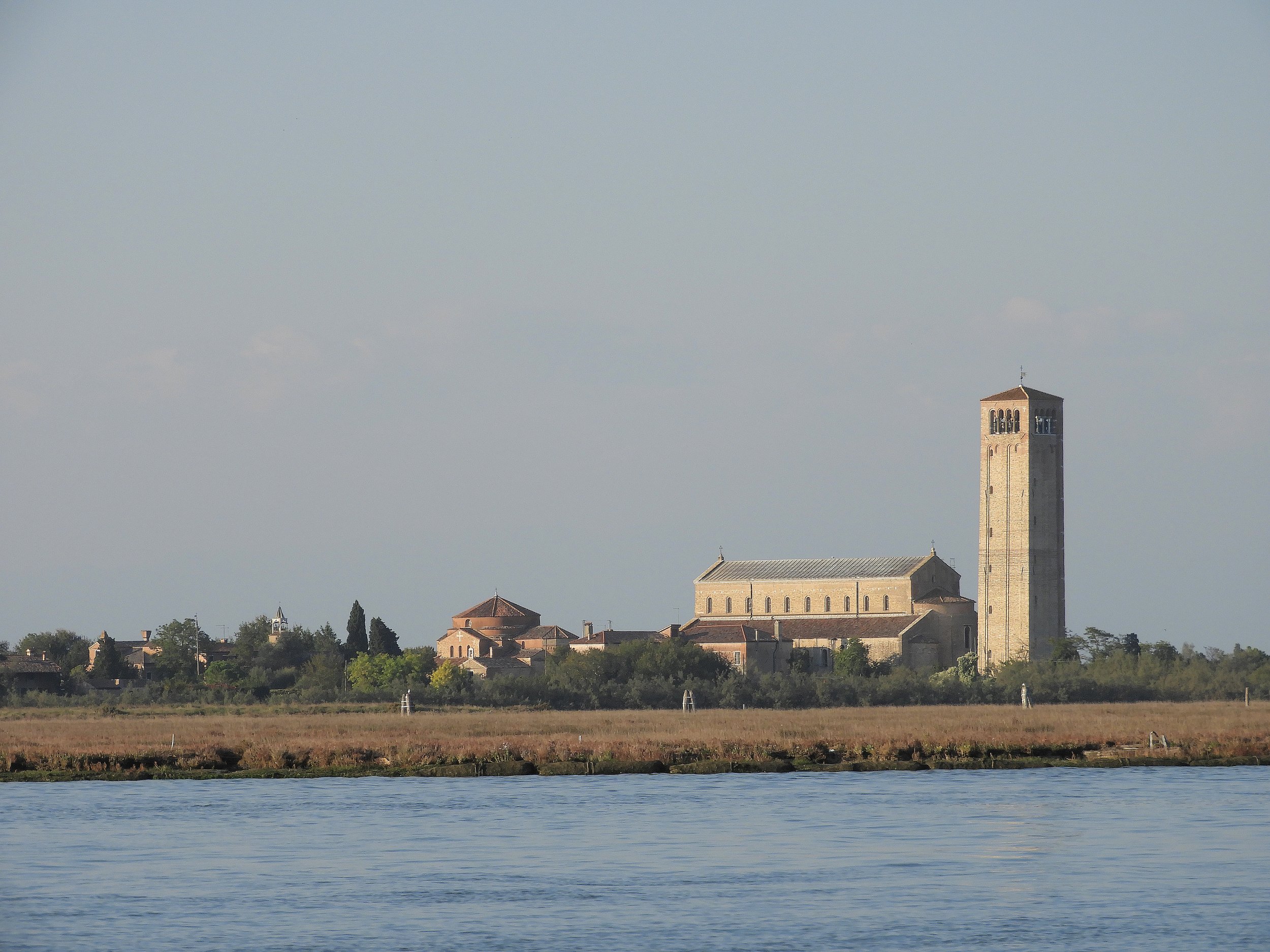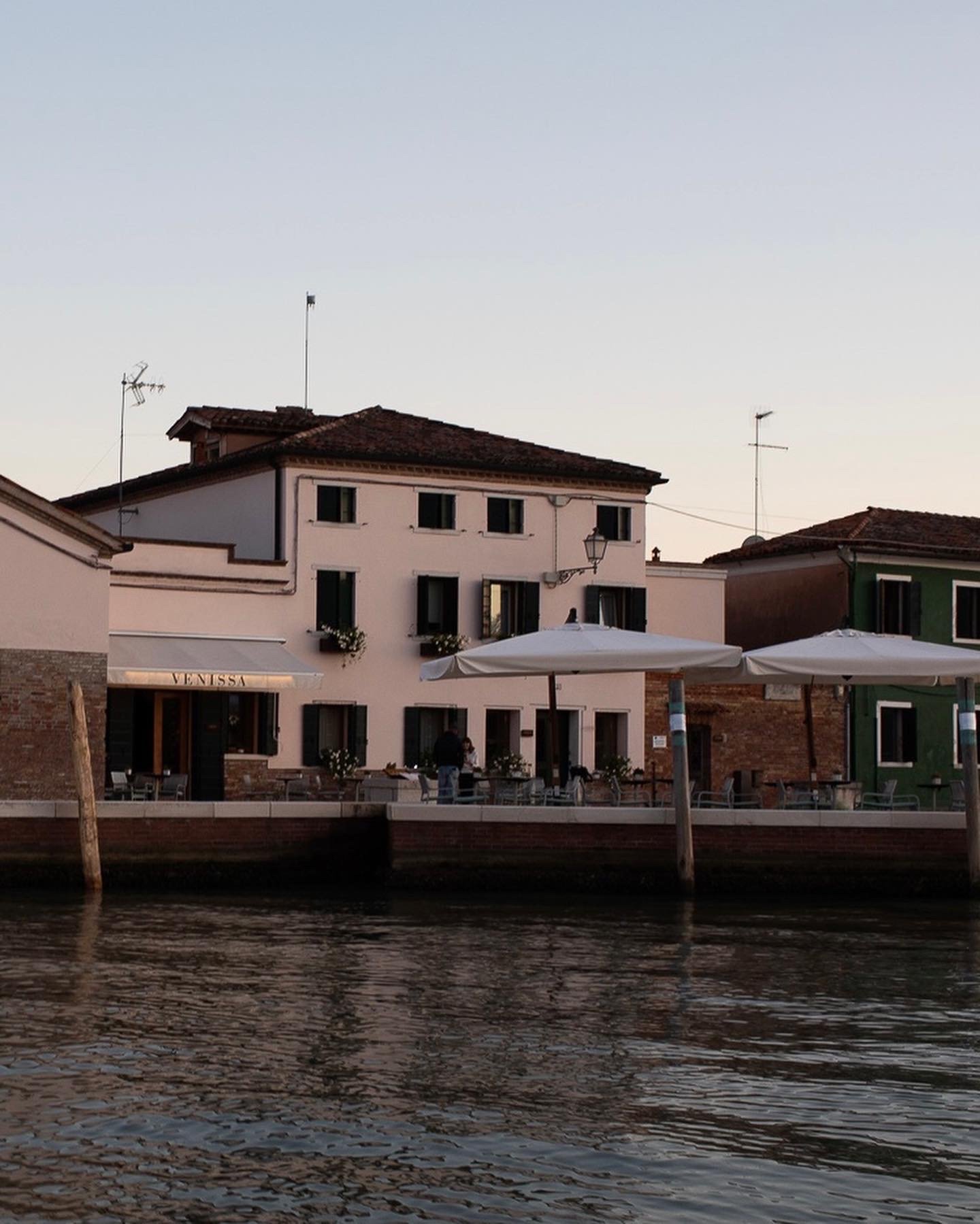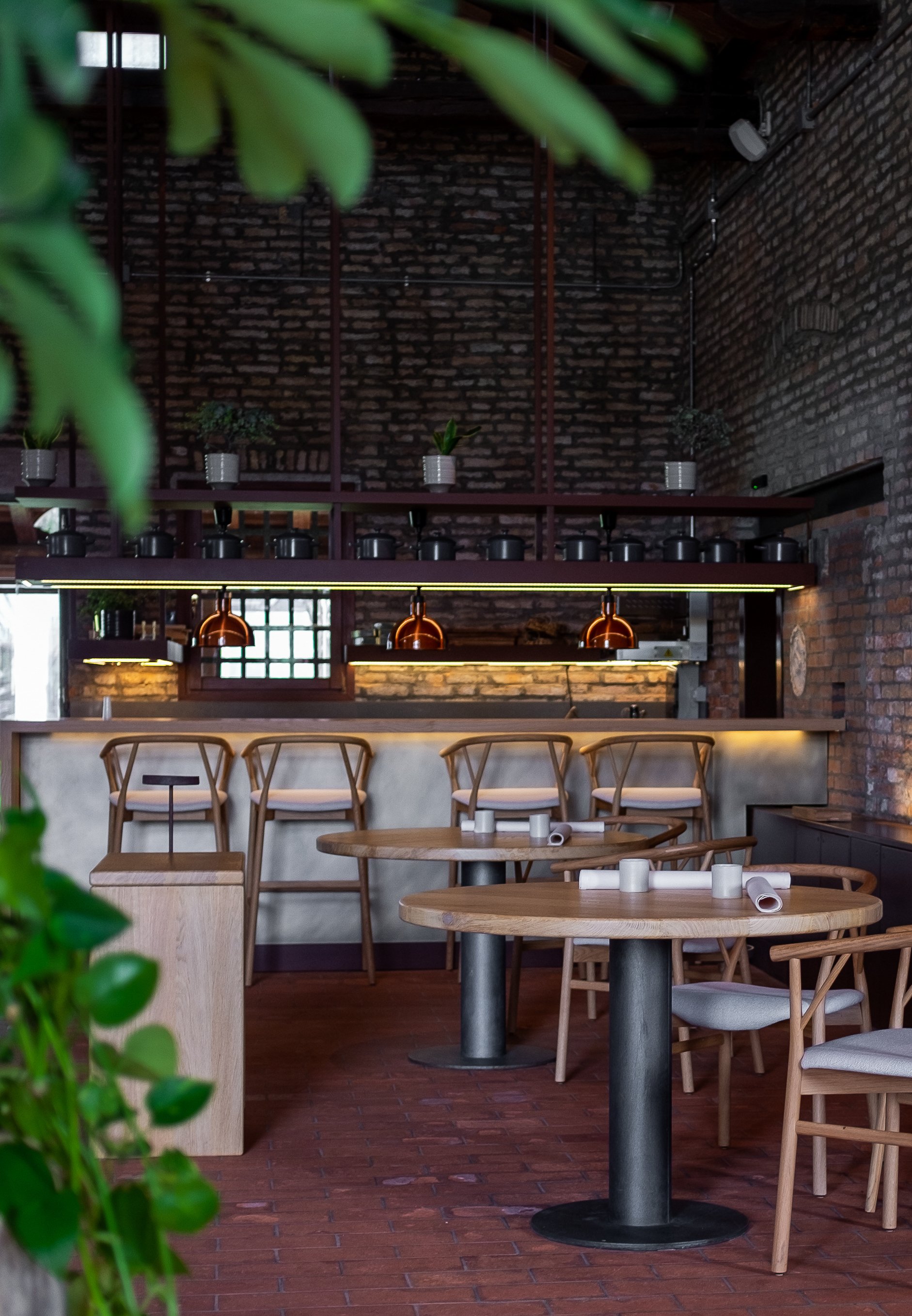AN INTERVIEW WITH SEBASTIANO BAZZICHETTO
Sil: Giudecca, called Spinalonga by the Venetians for its elongated shape, is an island located south of the historic centre of Venice. Comprised of eight islands, it can be reached with just one stop by vaporetto crossing the Giudecca canal. It is mostly a residential area that enjoys a beautiful view of San Marco, making it a desirable option for travellers seeking a local vibe away from the hordes of people. What are the top places to visit and things to do while in La Giudecca?
Sebastiano: Although separated from Giudecca, just east of there is the Church and Monastery of San Giorgio Maggiore, designed by Andrea Palladio. It has an incredible labyrinth inside inspired by Argentinian writer, Jorge Luis Borges.
A view of La Giudecca: La Chiesa delle Zitelle on the left, Chiesa del Redentore by Andrea Palladio on the right. Photography courtesy of Vela Spa.
A must-visit in Giudecca is la Casa dei Tre Oci, the neo-Gothic House of Three Eyes was built in 1913 by artist and photographer Mario de Maria, who conceived its distinctive brick facade with three unusually shaped arched windows. It houses his photographic archive and interesting exhibitions of contemporary art, especially photography. The Church of Redentore, also designed by Palladio, becomes the protagonist of the celebrations honouring the feast of the Redeemer on the third Sunday of July. If you are there, you will catch the spectacular fireworks that light up the lagoon that night. Constructed by the French philanthropist Cyprienne Hériot in the 1920s, Villa Heriot is an enchanting neo-Byzantine villa on the island of Giudecca surrounded by a sprawling garden with a sweeping view of the Venice lagoon. An absolute must is an aperitivo on the rooftop at five-star, luxury Hotel Molino Stucky. I also recommend to visit the cloister of the former convent of SS Cosima and Damiano with its 4,300 square-foot collective garden.
La Festa del Redentore. Photo courtesy of Vela Spa
Hotel Molino Stucky. Photo by Vincent Marchessault
Sil: What are some of the places where you can dwell amongst the locals and live a more authentic Venetian day in the life?
Sebastiano: The little, far-from-fancy, unappealing bars are always good spots to find locals. Ostaria Ae Botti is one of my favourites for a bite and a glass of wine. And I would lie if I did not mention a fancier bite at Cip’s Club, where one should always savour a divinely-made Bellini. After all, this internationally renowned drink was invented by Cipriani.
PHOTOS OF CIP’S CLUB COURTESY OF BELMOND
Sil: Known as the golden island, with its golden age taking place in the early 20th century, (1910-1920) the Lido has retained remnants that harken back to its glory days; a Sunset Blvd. type of faded glamour. The Hotel Des Bains, the Bagni Alberoni made famous by Death in Venice director, Luchino Visconti. What and where must one do or go where you can capture a glimpse of the greatness of what once was? How do you undertake this voyage and go back in time, if only for an afternoon or a sunset aperitivo with the timeless beauty of the Adriatic and the Serenissima as the backdrop?
Seb: The centre of Venice’s Lido along its main artery, the Gran Viale Santa Maria Elisabetta, is where you can take a stroll or rent a bike and admire the magnificent villas, once summer residences of the European aristocracy, as well as luxury hotels with unique charm, such as the Grande Albergo Ausonia Hungaria. This is an open-air museum of the Liberty style villas, AKA Italian Art Nouveau. The Excelsior Hotel is always a lovely place to have a cocktail on the terrace by the sea. During the golden hour, you can picture the European aristocracy and English grand dukes of la belle epoque while watching the sunset. Try to catch a glimpse of the Hotel Des Bains from the beach. A departure from the glamour of the Lido, take a little tour to Malamocco, once the capital of the Venetian dutchy until the 10th century, located in the south-central area of the island, Malamocco is a village surrounded by a canal, where time seems to have stood still.
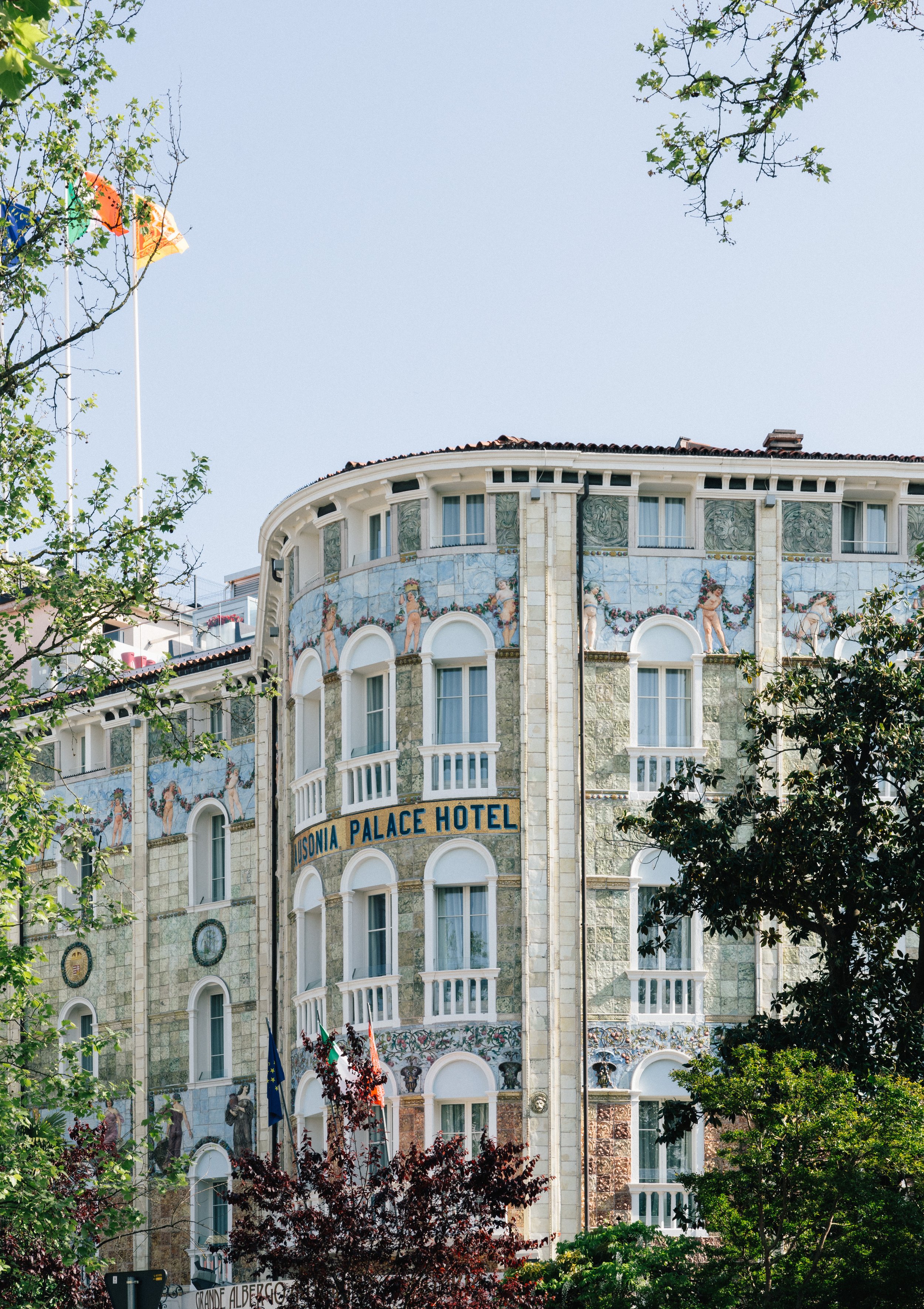



Sil: This quiet beach island comes alive on the international stage once a year with the 10-day Film Festival which takes place at the end of August and early September. Celebrities, both major and minor players of the film industry, come to the Lido. Where are the usual places where you can do some star-spotting and discover the Lido in a whole new light during this special moment at the end of the summer?
Seb: The Palazzo del Cinema and sometimes the Palazzo del Casinò, where great parties are organized. Even if you cannot get in, you can get a glimpse of the stars before they enter the buildings.
Sil: Besides beach days where you can choose from three free beaches such as Alberoni, San Nicololetto or Murazzi, or equipped ones with umbrellas, sunbeds and restaurants, what other island experiences would you recommend where you can escape the herd of tourists?
Seb: San Lazzaro degli Armeni, Torcello, Mazzorbo, Sant'Erasmo, San Francesco del Deserto and San Servolo. They are all incredibly beautiful, far from the barbarian-like crowds, not always easy to reach but they all represent a journey back in time. When in Mazzorbo, fight to get a table at Venissa Ristorante or Ai Cacciatori.
Sil: Where in Venice (or its islands) do you feel “La Serenissima” most? Where is its spirit best embodied for you and why?
Seb: Probably in Cannaregio and Castello, where you can meet lots of locals and where Venetians still live and work. The grandeur of our glorious past can be definitely sensed in Palazzo Ducale, Ca’ Rezzonico, Scala Contarini del Bovolo, the little-known Church of San Pantalon. I also quite enjoy going to the Rialto Market, very early in the morning, just to hear native Venetians speak amongst each other as vendors sell their goods to locals.
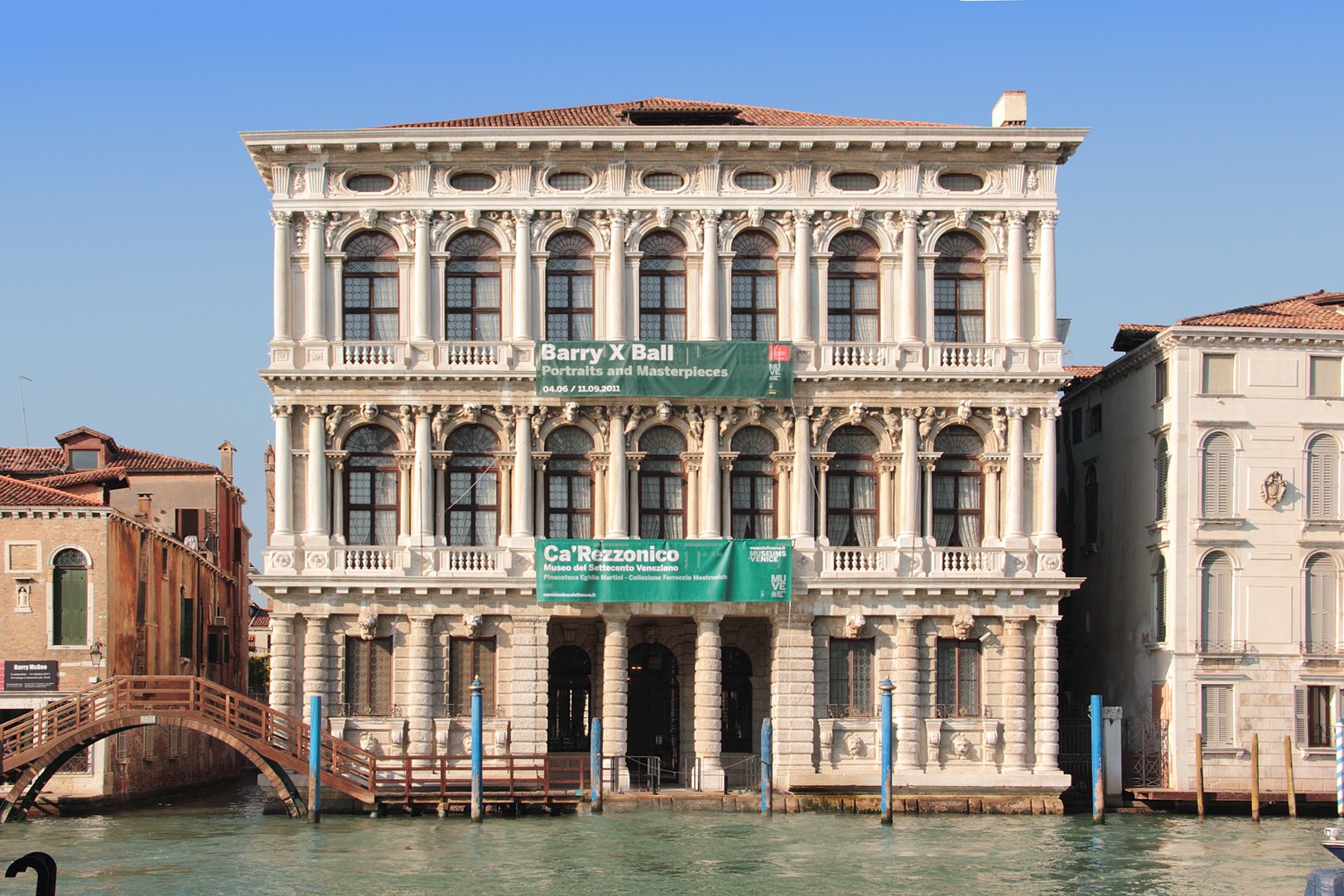

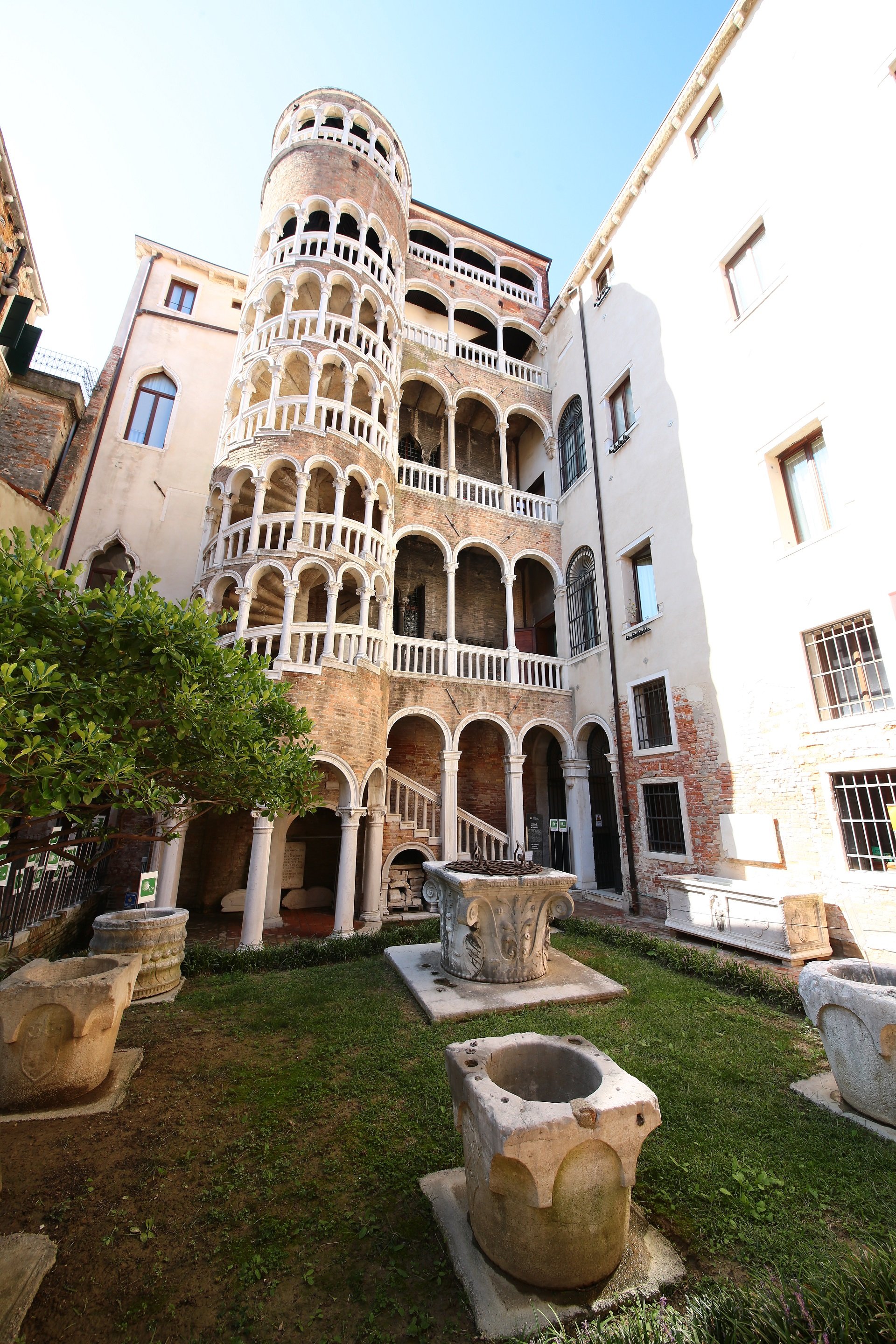
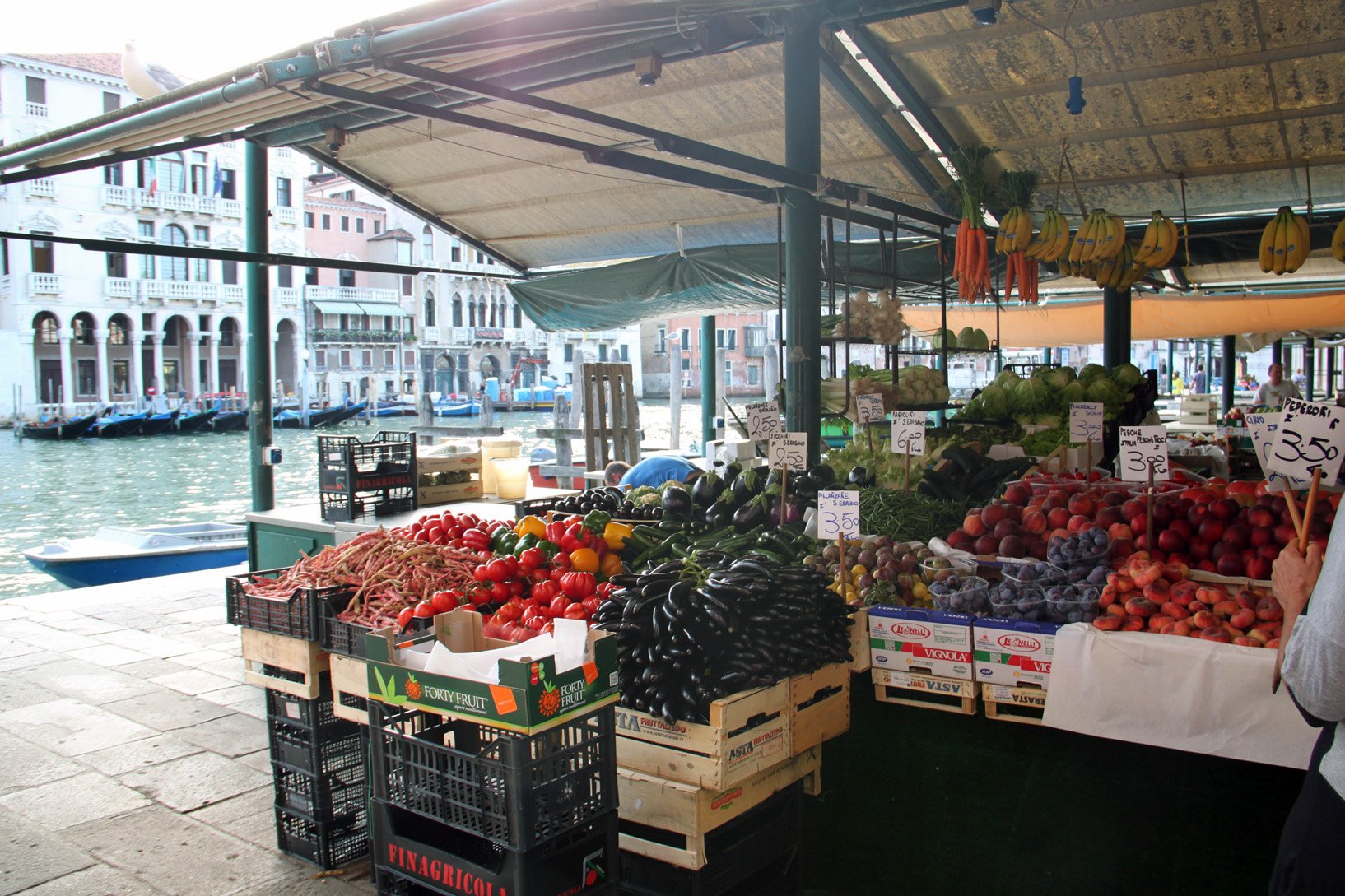
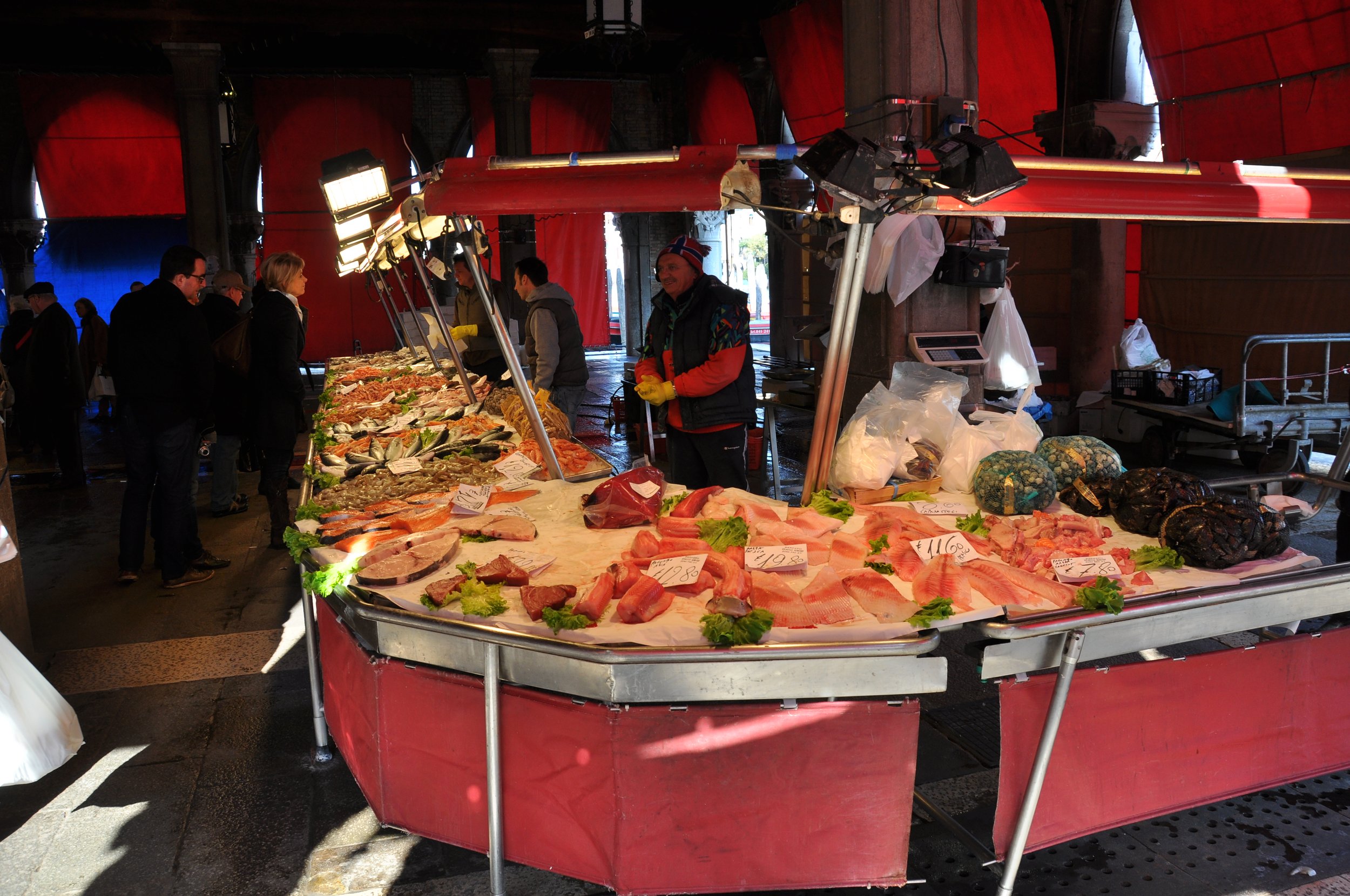
Sil: From my research, it seems that once the sun goes down, the tourist crowds dissipate, freeing up Piazza San Marco. Is the evening an opportunity to visit Venice during the summer and catch its magic most?
Seb: The best and easiest way to enjoy Venezia Notturna is to get lost after dinner, around or 10. You could choose a different neighbourhood every night, roam around and you will surly experience the magic of the city by night.
Rialto Market, Tesone Grande sometimes hosts events.
Palazzo Ducale by night. Photo by Vincent Marchessault.
I must emphasize though, prior to arriving in Venice, read books and blogs and get there prepared. When you know the history of this enchanting city and read about the spots that you can discover simply by walking around, you will savour it most.
“If you arrive in Venice hoping to enjoy your stay having your nose glued to Google maps, you have already lost the game, and it will be a pure nightmare.”
Sil: Which month or season is best to visit Venice and experience it more like a local and truly understand its essence?
Seb: April or May and end of September and October.
Sil: A favourite Venetian pastime?
Photo by Vincent Marchessault
Seb: Movie screenings in Campo San Polo; walking along le Zattere while enjoying a gianduiotto ice cream by Nico. Roaming around the city without a destination very early in the morning or very late at night.
Dr. Sebastiano Bazzichetto is a Venetian writer, scholar and university professor.
Thank you for spilling your secrets, Sebastiano!
For more insights, and a romantic journey of La Serenissima, be sure to catch Sebastiano’s YouTube series: Wish You Were Here—My Secret Venice created for the Italian Heritage month in June, sponsored by Villa Charities.







